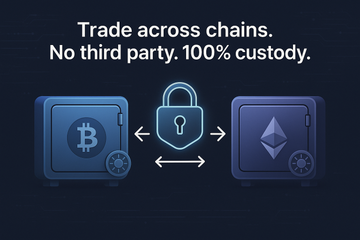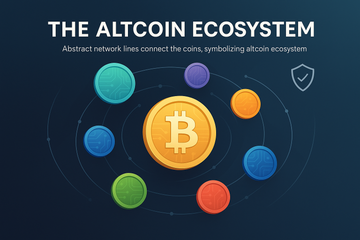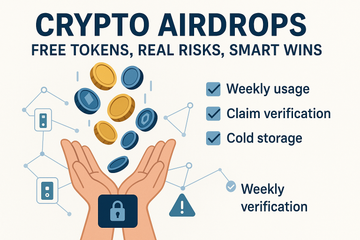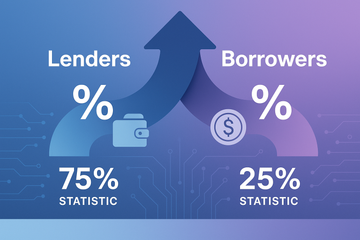AI agents are no longer a thought experiment. They are software actors with goals, tools, and a budget. They can watch markets, call contracts, move funds, and even talk to other agents. The twist is where they live. When an agent runs on a decentralized network and plugs into crypto rails, it stops being a chatbot and starts being a worker.
You know what? That shift matters. It means machines can manage tasks that used to chew up your time, like rebalancing a portfolio or claiming rewards on a dozen chains. It also means new risks, so we need a sober plan for keys, limits, and trust.
So, what is an AI agent, really?
An AI agent is an autonomous program that can plan, decide, and act with little to no human input. It has a goal, some tools, a memory of what happened, and a way to measure progress. On a decentralized network, it can read on-chain data, send transactions, and coordinate with other services without a central boss.
Think of it like a junior analyst who never sleeps. It tracks your rules, checks prices, applies your policies, and executes when conditions fit. It is not magic. It is just careful engineering plus smart prompts and good guardrails.
Why crypto folks should care
Agents that can hold permissions and spend within limits can do real work for on-chain teams and solo traders. Picture a bot that rebalances a basket of ETH, LSTs, and restaked assets. Or a treasurer that drips stablecoins to contributors each Friday. Or a governance helper that reminds you to vote and proposes text based on past decisions.
Here is the thing. Most of us already rely on scripts, keepers, or a frantic calendar. Agents bring the same idea, just with learning, memory, and conversation layered in. You can chat with your treasurer, ask what changed, and get a clean answer with links to Etherscan.
A quick example
Say you run a small DeFi treasury. You want a 60-30-10 split across ETH, LRTs, and USDC. Your agent checks prices hourly, watches gas, and nudges weights back when they drift past 3 percent. If gas spikes, it waits. If slippage is high, it spreads trades. It writes a short report on Sunday, then archives the receipts.
Sounds fully hands-off. Not quite. You still set limits, approve the first policy, and hold the master keys offline. That last part is non-negotiable.
The nuts and bolts, without the fluff
An on-chain agent is built from a few parts that click together:
- Reasoning core: a model or rule engine that picks the next step.
- Tools: connectors to RPC, exchange APIs, subgraphs, or smart contracts.
- Memory: logs, state, and summaries so it does not loop.
- Policy: spend caps, whitelists, timelocks, reviewers.
- Executor: the wallet or account that signs and submits transactions.
On Ethereum and L2s, the executor is usually a smart account like Safe, sometimes with ERC-4337 features. You can give the agent a limited session key, set daily spend limits, and require a second signer for big moves. Automation engines such as Gelato or Chainlink Automation can trigger the agent on schedules or conditions.
Security first, keys always win
Agents can make money, but they can also make a mess. The best defense is boring. Keep the cold root offline, and give the agent only what it needs.
That is where hardware wallets fit. A Trezor or Ledger can hold the root ownership of your Safe. The agent uses a constrained key with tight permissions. For larger treasuries, use a multisig with a hardware quorum and an agent key that only handles low-risk tasks. If the agent goes weird, revoke the session key and you are safe.
A practical setup that works
- Create a Safe with two owners, your Ledger and your Trezor. Add a session key for the agent with a daily limit and a whitelist of contract methods.
- Wire alerts through Telegram or Slack for any spend above a threshold. Humans stay in the loop.
- Schedule routine jobs with Gelato. Push analytics to Dune or a Grafana board so you can see spend, gas, and slippage at a glance.
It is simple, but it holds. The secret is clear limits, clean logs, and fast revocation.
Where do these agents live?
Some teams run agents on a server with strict access and secrets management. Others use serverless jobs for triggers. If you want less single-point risk, look at networks that coordinate agent services across many nodes. Projects like Olas focus on decentralized agents and services that keep running even if one node fails. There are also AI-focused networks such as Bittensor, though the fit depends on your workload and appetite for experimentation.
There is no single correct choice. Start centralized for speed, then harden over time. Move critical decision making behind reviews. Shift computation or monitoring to more distributed setups as your risk grows.
How agents actually talk to the chain
Agents need a reliable bridge to on-chain data and actions. Common pieces include:
- RPC gateways for reads and writes, with fallbacks.
- Indexers like The Graph or custom Postgres for fast queries.
- Price oracles such as Chainlink for guarded quotes.
- Simulation with Tenderly or Foundry to sanity check a trade before it hits mainnet.
Many teams are also using account abstraction features. Sponsored transactions through paymasters keep UX smooth, and session keys let the agent act without exposing the master signer. On chains like Base and Polygon, this is already common, and it keeps getting better.
Costs, gas, and the yardsticks that matter
An agent stacks three kinds of cost. Model calls, data, and gas. You can keep model costs low by batching tasks and caching summaries. You can cut data costs by streaming only what you need. Gas is trickier. Use L2s for routine moves, batch when possible, and simulate before you post.
Measure the right stuff. You want net gains after fees, the error rate on predictions or rules, time saved for your team, and the number of human approvals triggered. If your agent saves you three hours a week and never breaks limits, that alone can pay for itself.
What could go wrong, and how to keep your cool
Failures cluster. A few patterns show up again and again:
- Prompt injection: the agent reads poisoned text and acts badly. Keep critical actions behind strict policies and allowlists.
- Oracle or price manipulation: your agent trusts a thin pool and gets sandwiched. Require multiple price checks and volumes.
- Bridge approvals: one loose approval lets a malicious contract drain funds. Trim approvals, set small caps, and auto revoke.
- Latency races: a slow agent loses an MEV battle. Accept it for non-urgent tasks, or pay for faster routes if the gains justify it.
Also, watch the human layer. Fatigue and overconfidence sneak in. Rotate reviewers, keep checklists short, and let the agent draft changes, not enforce them, when money is large.
Tools of the trade
If you want to tinker, you have choices. Developers often start with LangChain or AutoGen to wire tools and memory. For on-chain actions, check out Coinbase’s AgentKit for Base. If you care about decentralized execution, explore the Olas SDK. For treasury safety, pair a Safe with hardware like Ledger Nano X or Trezor Model T, then add session keys. For monitoring, Tenderly for simulations and alerts, and Dune for dashboards.
Could you build from scratch with cron jobs and a few scripts? Sure. But the ecosystem has matured, and these tools shave weeks off setup.
A small contradiction worth noting
People say agents should be fully autonomous. I disagree. True, autonomy unlocks speed and coverage. Still, money needs friction. Add reviews for big trades. Add time delays for governance changes. Let the agent do the grunt work and propose actions, then have a human tap approve on a hardware wallet. That balance keeps you fast and safe.
Getting started without getting burned
- Pick one low-risk task. Harvest rewards, rebalance a small bag, or send invoices.
- Set a hard daily spend cap. Start silly small.
- Use a Safe with a session key. Keep your Ledger or Trezor as the root owner.
- Write plain-language policies. What the agent can buy, where, and how much slippage.
- Simulate before you post. Every time.
- Add alerts for limit breaches. Then sleep better.
Honestly, most wins come from removing busywork. Let the agent track deadlines, claim points, or ping you when gas is cheap. Save the creative calls for yourself.
Where this is going next
The near future looks practical. More agents will manage on-chain accounts with session keys and clear policies. Teams will run small swarms, each bot owning a single job. AI models will get better at reading contract ABIs and writing safe transactions with templates. And yes, we will see marketplaces where agents offer services to other agents. That part feels early, but it is coming.
Seasonally, rebalancing around year end is a sweet use case. Markets get choppy, tax rules kick in, and weekends can be thin. An agent that watches spreads and timezones can take emotion out of it, then leave a tidy report for Monday coffee.
The bottom line, plain and simple
Agents on decentralized networks can do real, paid work. The recipe is simple. Tight keys, clear limits, good logs, and a friendly way to talk to your bot. Keep your master signer on a Trezor or Ledger, give the agent a short leash, and let it handle the boring parts. You keep the judgment. It keeps the schedule.
Let me explain it one last time. The goal is not zero humans. The goal is fewer mistakes, fewer late nights, and a wallet that moves only when the policy says yes. Build that, and your first agent will feel less like a gimmick and more like a steady colleague.











